

- EDITIONS:
 Spanish News Today
Spanish News Today
 Murcia Today
Murcia Today
 Alicante Today
Alicante Today
The medieval Jewish quarter and synagogue in Lorca
These were discovered during works to build a new Parador Hotel
During construction works to build the Parador Hotel in Lorca, the remains of the only known medieval synagogue within the Region of Murcia was discovered, as part of the Jewish quarter inside the fortified walls of the Mediaeval castle. The Synagogue is the only one known to exist in Spain which has not been re-used as a religious building following the tumultuous events of the 13th to 15th centuries, it being quite common to find, for example, a Christian church built on top of the site of a mosque following the Reconquista.
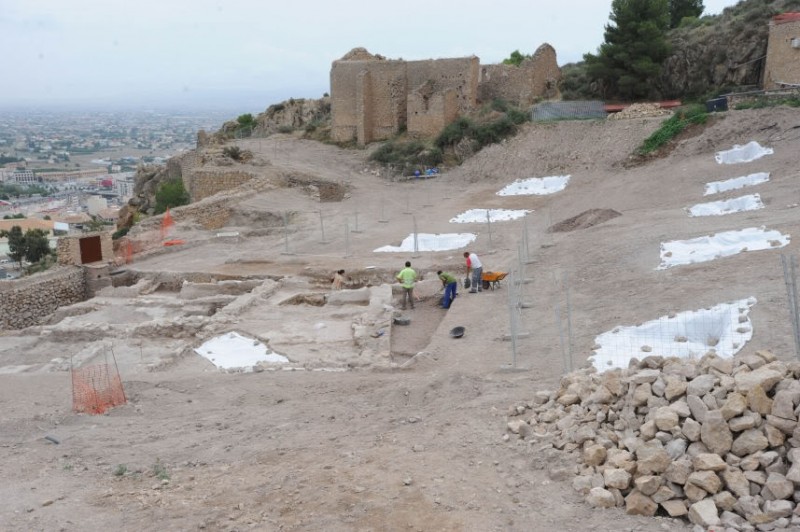
The discovery of the Synagogue in the Jewish Quarter of Lorca is exceptional because of its state of preservation and also because it offers important archaeological insight into this type of 15th century building and the layout used.
The Synagogue is rectangular in shape with two entrances which open on to a courtyard. One entrance allows access to a foyer which houses a fountain once used for ablutions prior to prayer and this connects to a large meeting room surrounded by benches attached to the walls.
This room is the focal point for meeting and prayer and housed the holy ark ( arón ha-qodesh) in which the Torah scrolls were kept on the eastern wall. Opposite this is the reading platform (bimá ) and the space between the two is known as the Via Sacra. Above these is the women’s gallery ((matroneum), which is accessed by a third entrance.
The upper areas of the building have been reconstructed using wood to enable visitors to fully appreciate the size and layout of the structure when it was in use.
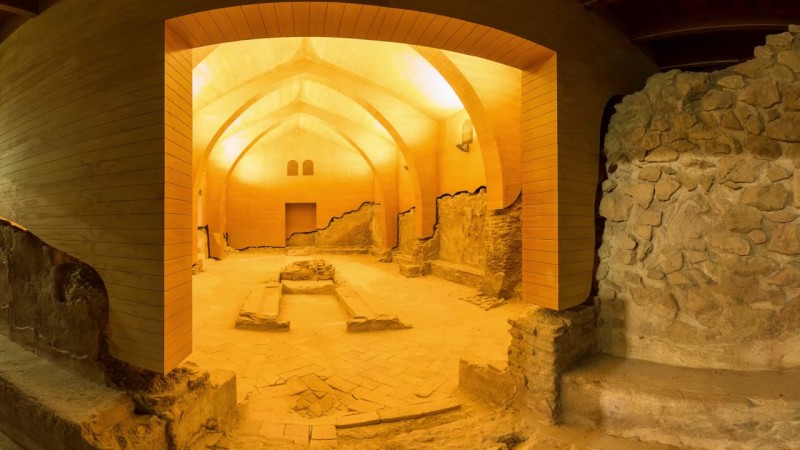
Importance of the Jews in Mediaeval Spanish society
In the Iberian peninsula (Spain) the Jews were of great importance in Medieval society.
Southern Spain was occupied by Muslim invaders at the beginning of the eighth century, and they remained in power across much of what is now modern Spain until the majority of Spain was reconquered in the 12th and 13th centuries by the combined Christian forces of the Reconquista, leaving only the Kingdom of Granada in the hands of the Moorish rulers with their capital in Granada.
The whole story of Lorca at this point in history can be read in more detail in two of the sections of the extensive history of Lorca: part 1 deals with the prehistory to the Iberians, part 2 covers the arrival of the Romans, Moorish occupation and Reconquist, with part 3 picking up the story as the Reconquist was consolidated and the perpetual battles for control of the area dominated the Mediaeval era.
Jewish businessmen were an integral part of the life of most cities, bridging the gap between cultures in a vital trading róle, particularly important in a frontier city such as Lorca which straddled important communications routes running along the Guadalentín Valley and coast.
Once the Reconquist had returned Lorca to the forces of Christianity, defined districts were allocated to both Jewish and Muslim inhabitants who were dependent on the monarch, giving them direct and explicit "protection" in exchange for which both Muslims and Jews paid a special tax to the Crown.
As well as being, therefore, an important source of income for the royalty, this protection of ethnic minorities was justified in the face of the social exclusion they were subjected to on the part of the Christian church.
Unlike the Moors who remained in "reconquered" areas and were mainly agricultural labourers, Mediaeval Jews found it both necessary and advantageous to live in the city, protected within its walls and safe also under the watchful eye of the city council to carry out their financial transactions and commercial trading activities.
In 1243, Prince Alfonso of Castile took this area, making Lorca a border city, and therefore, a place of strategic importance.He strengthened and re-enforced the city and its walls, amplifying the former Moorish castle and converting it into a Mediaeval stronghold.
Mediaeval Murcia was a dangerous place, the border towns subject to frequent raids from the neighbouring Kingdom of Granada, and fierce skirmishes between Moors and Christians were a regular occurrence.

Although accepted as a part of Mediaeval life, the Jewish community was separated from the rest of the inhabitants and occupied their own quarter, which was known as the "judería" or "aljama". This area was clearly divided from the other quarters of the city by walls, which enclosed the Jews in their own part of the community. In the case of Lorca, the Jewish quarter was within the walls of the citadel, and access to it was only through the Puerta del Pescado (the Fisheries Gate).
One of the aims of this physical separation of the different quarters of the city was of course to protect the Jews, but at the same time it also caused clear ethnic division within the community. It was made overtly clear that the "real" citizens of Lorca were the Christians, and the Jews were accepted as necessary, but were not part of the everyday life or the decision-making processes of the city.
In the 14th century the Jews were an active community who brought considerable wealth to Lorca. They mainly earnt their living by craftsmanship and financial activity, and moved freely over the frontiers between kingdoms, making it possible for them to further trading activities where Christians often found it more difficult.
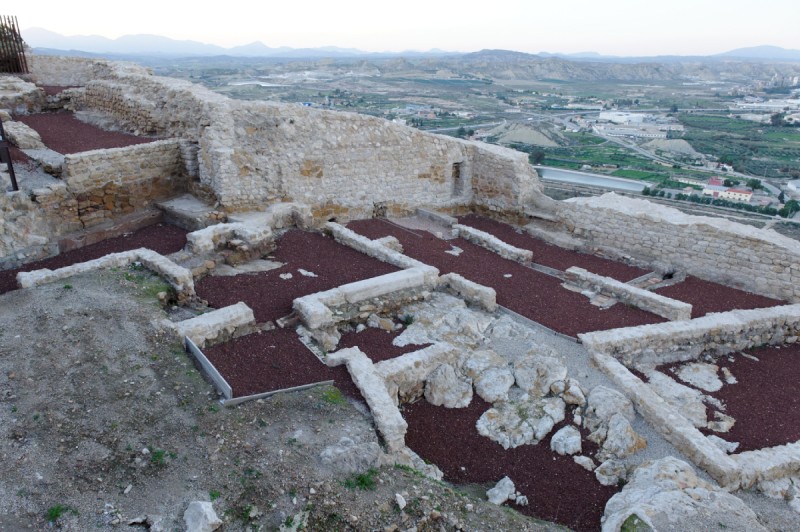
The Jewish quarter was abandoned when the Catholic Monarchs , Isabella and Ferdinand, succeeded in completing the Reconquist of Spain, having united the 2 powerful, rival Kingdoms of Castile and Aragón through their marriage, creating a combined force powerful enough to defeat the last remaining Muslim monarchs in Spain and take the Moorish kingdom of Granada in 1492.
When Isabella and Ferdinand succeeded in completing their “reconquist” they expelled all Jews and Muslims from their kingdom : only those who accepted a conversion to Christianity were allowed to remain in the country. Many of the areas formerly occupied by these populations fell into disuse, and although in most cases the space was re-used, in Lorca the Jewish quarter was abandoned as the city extended sideways, spreading across the hillside outside of the fortified walls once the danger of a Moorish border frontier had been removed.
This site has yielded an extraordinary wealth of archaeological finds, including the remains of 20 glass lamps which once lit the synagogue, demonstrating that the site was abandoned in a hurry and never re-occupied.
These now have pride of place in the municipal archaeological museum: Click Museo Arqueológico
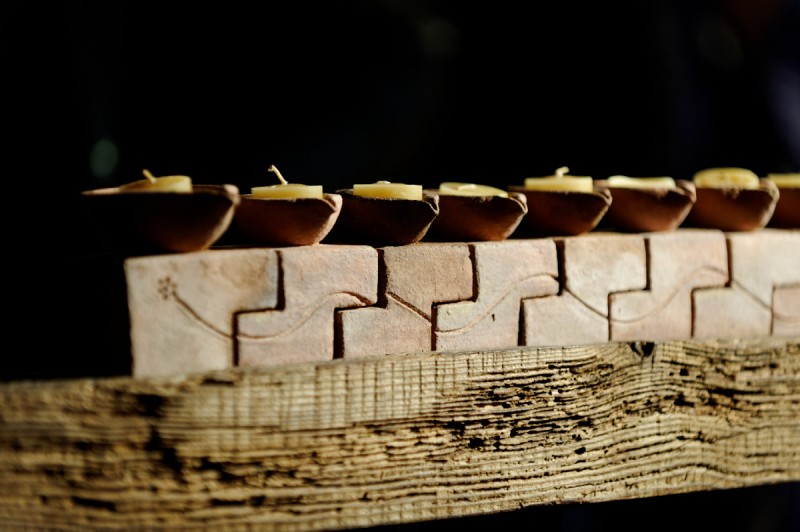
Archaeologists have uncovered the large Synagogue and eleven houses which open onto small squares with narrow streets and ramparts.
The houses are of various sizes and are adapted to the slope of the area. Most of them have small patios, raised alcoves, platforms with workbenches attached to the walls, laundries, pantries, wardrobes, kitchens and most have a bathroom.
Council archives contain documents from the second half of the 15th century which give an insight into the people who lived in this Jewish Quarter and the types of offices held by them, mostly relating to trade activities, but they also include other activities inherent to a border town, such as tax collection and undertaking negotiations to recover captives in exchange for a ransom.
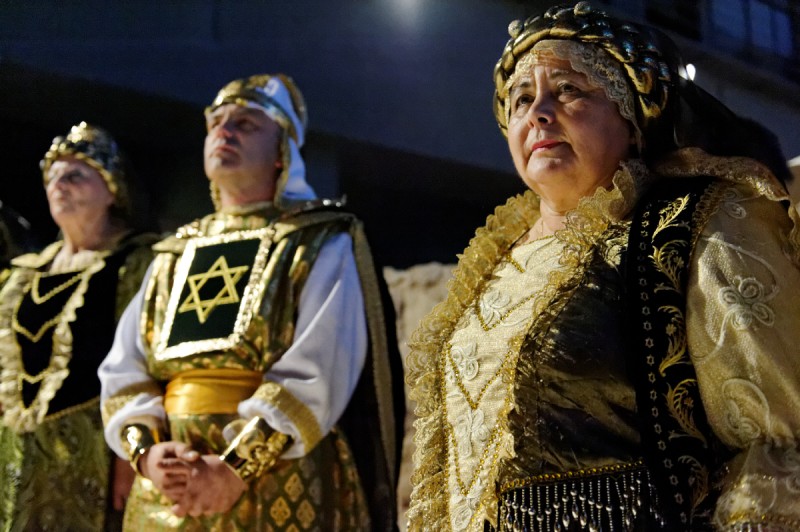
In December 2012 the former synagogue hosted the ceremony to light the first candles of Hannukah, the Festival of Light, the first time this had taken place in the castle for 520 years, and this is now an annual event in the calendar of the city.
Visits can be arranged to the Jewish quarter as part of a tour of Lorca castle, and tours of the Judería also take place regularly throughout the year within the programme of activities of the Lorca Taller del Tiempo organisation.
See the scrolling feed below for details of forthcoming tours and visits to the City of Lorca. Click here for more information about what to visit, agenda and tourist information for Lorca: LORCA TODAY

